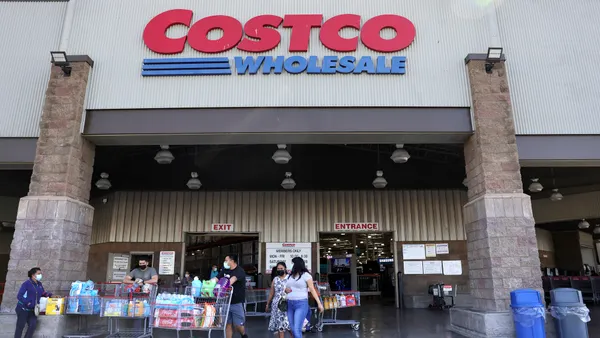Dive Brief:
- When customers use a new search tool that suggests a combination of picture and textual recommendations to refine their searches, they tend to spend more and report higher levels of customer satisfaction, according to a National Bureau of Economic Research working paper released this month.
- After 24 weeks of using the picture-text search tool, customers spent 3.2% more than those without access to the refined search tool and positive ratings increased 3.6%, according to the paper.
- “The typical search experience for consumers has been: input keywords and hope the results are relevant. Consumers are starting to have the ability to interact with search tools in a more intuitive way, and discover products that they would not have otherwise found,” Chiara Farronato, a faculty research fellow at Harvard University and an author of the report, told CX Dive in an email.
Dive Insight:
Despite large platforms like Google and Amazon offering search refinement tools, little research has been conducted on the value they provide. Economists from China, the U.S. and Canada set out to determine the short-term and long-term impact of such a tool on consumer spending and satisfaction.
One of the largest e-commerce platforms in China allowed researchers to study the roughly 10-month rollout of its new search tool, which suggests picture and text recommendations to consumers to refine their searches. The researchers did not name the e-commerce platform as part of their research agreement.
While there was not an immediate effect on consumers purchasing behavior, there was an immediate change in their search behavior. On the first day of using the tool, 5.5% of customers searched for queries the tool suggested, compared to 1% of customers in the control group.
The long-term impact was more clear. After 24 weeks, customers in the treatment group not only spent more, but completed 1.6% more orders compared to the control group.
The study also revealed a notable increase in customer satisfaction, as evidenced by higher positive ratings from customers and a reduced rate of product returns. After 24 weeks, there was a 3.2% decrease in the probability of returns. The study concluded that such results “confirm that the purchases made with the support of [picture-text guidance] are perceived as higher quality.”
Farronato said that while some companies may be tempted to conclude that increasing impulse purchases is good for consumers, their research shows “the benefits come from increasing the effectiveness of consumer search for products that consumers actually like and don’t return.”
Consumers also learned from the tool and began searching differently — an effect that spilled over into other searches consumers conducted on the platform.
“For example, the refined search tool may suggest 'bluetooth headphone' to consumers, who then learn to use similar terms for other searches, such as 'bluetooth keyboard,'” Farronato said. “Both benefits are significant and, as our research shows, result in increased orders and expenditures on the platform.”
The impact of such findings on retailers is significant, Farronato said.
“This opens new opportunities for businesses who are discovered through online search tools, especially those that are not top sellers in their respective categories,” Farronato said. “If you’re a niche seller, you should be excited about the new search tools that will be emerging because consumers will have an easier time finding you.”











